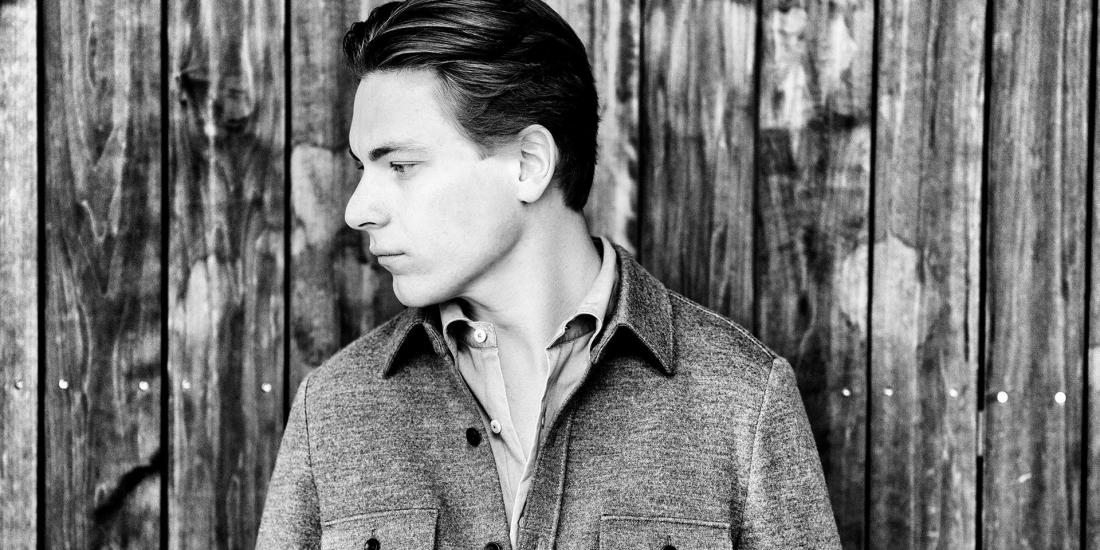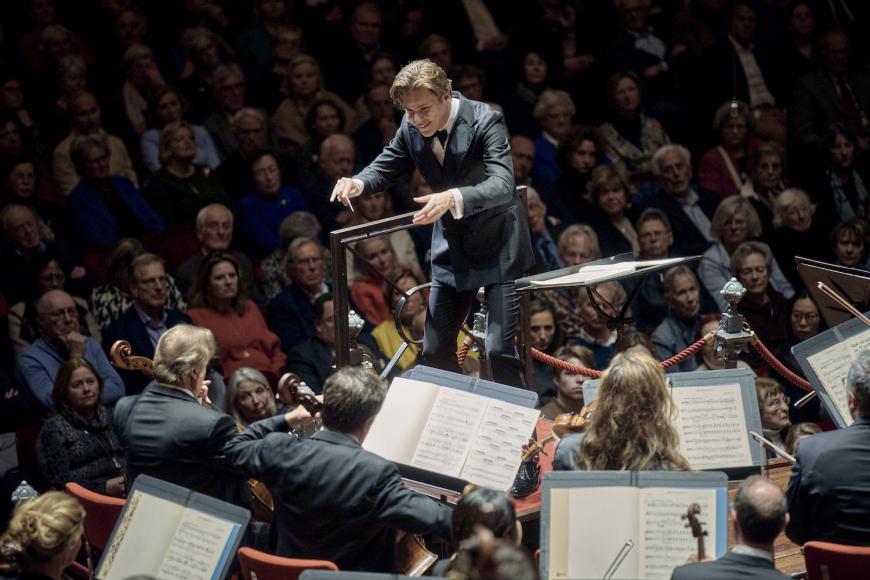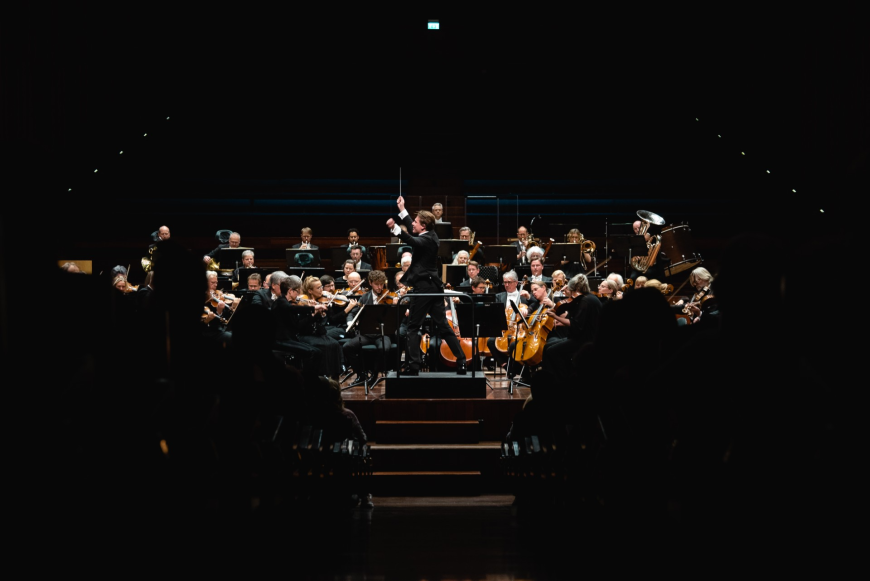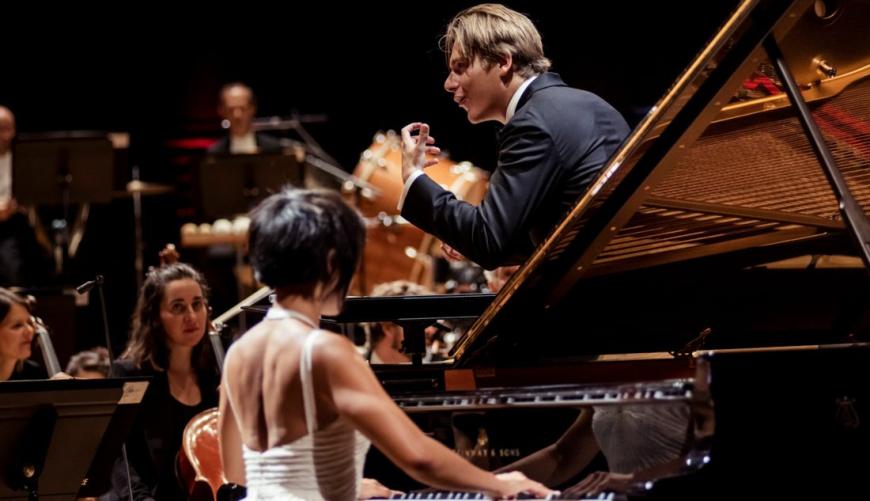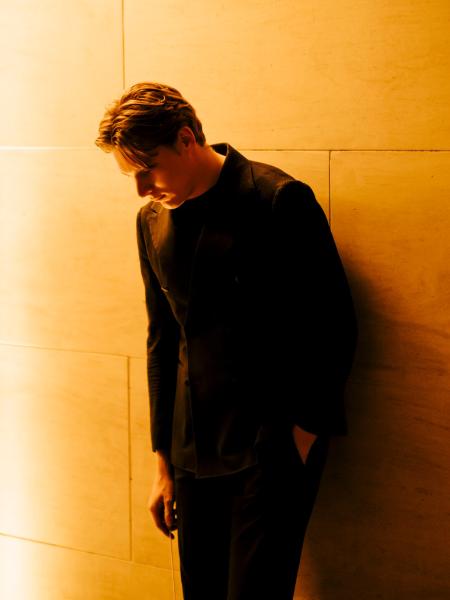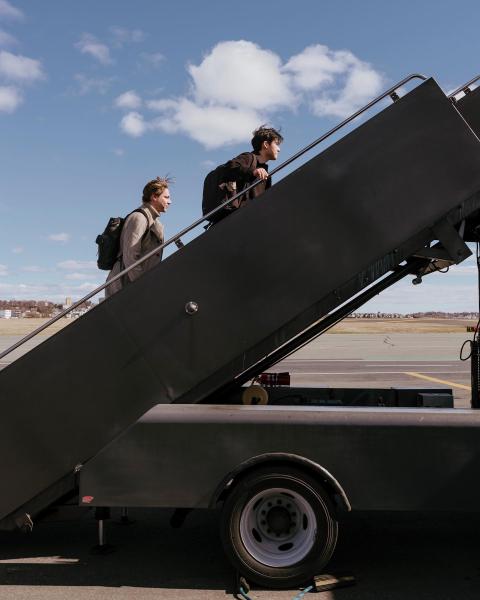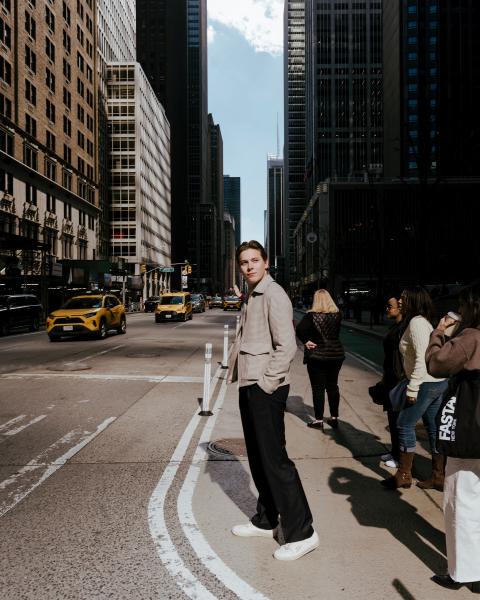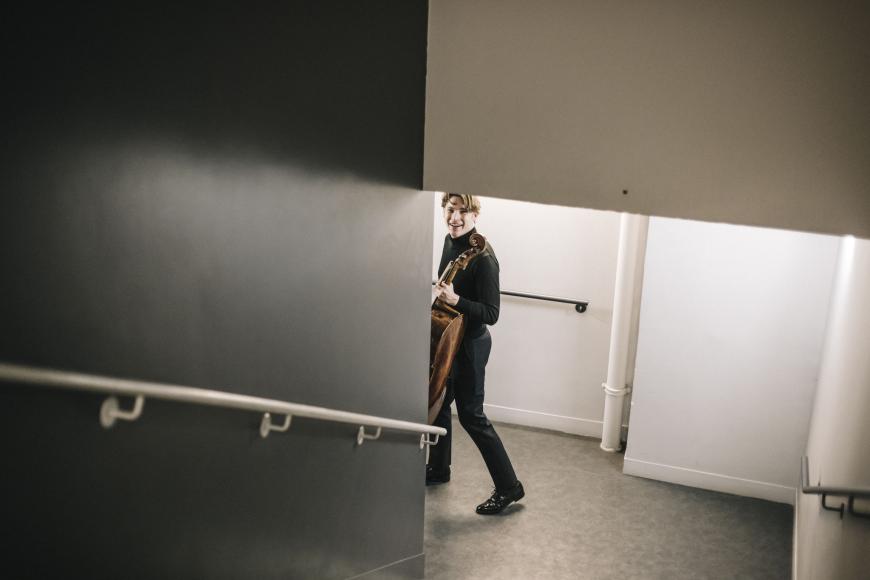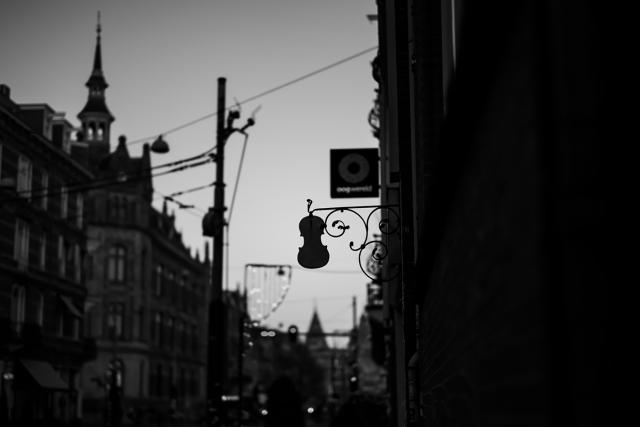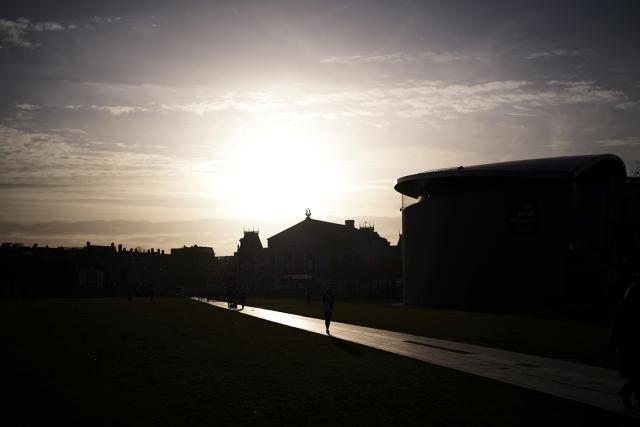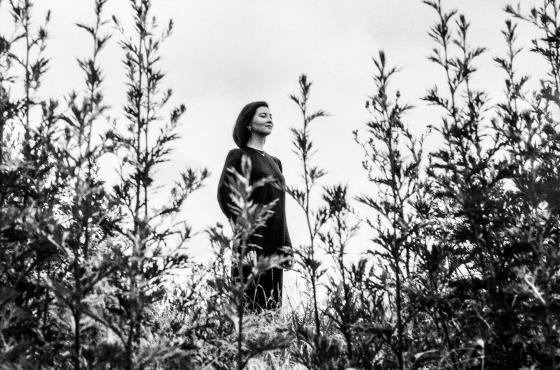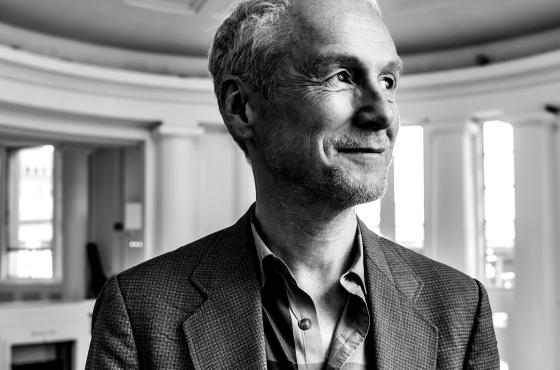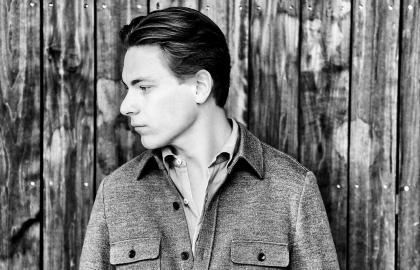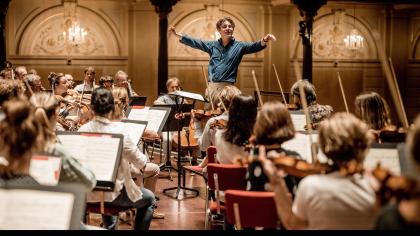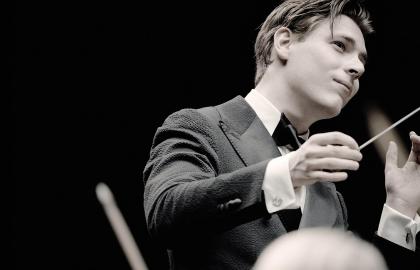- There Are Thirteen Months in His Diary
Klaus Mäkelä is busy, extremely busy. He was appointed Chief Conductor of the Oslo Philharmonic Orchestra in 2020. A job he combines with his role as Music Director at the Orchestre de Paris. He comes to Bozar with both of these orchestras as well as with the Royal Concertgebouw Orchestra in Amsterdam, of which he will become Chief Conductor in 2027.
But wait, that’s not all! In April 2024, it was announced that Klaus Mäkelä will lead the Chicago Symphony Orchestra – succeeding Riccardo Muti. The 28-year-old Finn will become the youngest Chief Conductor in the Chicago Symphony’s history. And just in case it still isn’t clear: Mäkelä is on the wish list of even more world-renowned orchestras. Usually, one or two guest appearances are enough to seal a long-term collaboration.
- As a Child, You’d Find Him Under the Piano
As a toddler, he crawled under his parents’ piano and let the warm sound envelop him like a blanket. Music was omnipresent in the Mäkelä household. His father is a cellist, his mother a pianist, and they played Shostakovich’s Sonata for Cello and Piano together every day. When seven-year-old Klaus sang in a production of Carmen, he trained his sights – like an Olympic archer – on one person: the conductor.
After that life-defining experience, he knew what lay in store: “I wanted to do what that conductor did! Notwithstanding the fact that, at the time, I had no idea of his responsibilities.” Orchestra conducting gradually won out over his cello studies, until he was finally taken under the wing of Jorma Panula in Helsinki – the teacher of Esa-Pekka Salonen and Osmo Vänskä, amongst others. And the rest is (recent) history.
- He Combines Heaven and Hell
Mäkelä often lets one work clash with another in his programme choices. It must (and will) have life. Quite literally. Working with living composers keeps the conductor’s sights sharp. “You never know what to expect,” he says of his various creative commissions.
The Finn places himself at the composer’s full disposal and he enjoys them being in the hall during rehearsals. For concerts, in turn, he counts on curious audiences that welcome, “hardcore contemporary music,” in Mäkelä’s own words. “For example, we merged Thomas Larcher’s Second Symphony with Mahler’s Tenth, which always reminds me of apocalyptic visions – think Hieronymus Bosch. With that, we united heaven and hell – from an Austrian perspective.”
- Conducting Has a Spiritual Element
When Mäkelä picks up the conductor’s baton, the orchestra knows what time it is. And that the clock is ticking. “Efficient and effective” is how journalist Clare Varney described Mäkelä’s work ethic after she was invited to attend rehearsals in Concertgebouw Amsterdam. Which does not alter the fact that he also allows time for ideas from the orchestra and wants everyone to hear one another. In the middle of a rehearsal of the Concertgebouw Orchestra, "Mäkelä fixes his gaze on the cellos while pointing at the horns who he wants the cellos to listen to." According to Mäkelä, the role of a conductor is "not just to give the beat, but to create an illusion of freedom for the musician, something spiritual, something magical, which allows for those unplanned wow moments in the concert hall,” he says in a Behind the Scenes for Oslo Philharmonic.
- He Views Life Through a Lens
Travelling, rehearsing, networking receptions, the life of a star conductor sounds like a war of attrition. But Mäkelä takes a positive view and, above all, sees the opportunities. That is why the rare free moments in the Finnish conductor’s schedule are not filled with music but with photography. With his Leica M11 in hand, he prefers to see the world – from Chicago to Oslo – through a black-and-white filter. To him, every city has its own character, its own way of life. To Preludium, he jokes that Amsterdam is particularly atmospheric and “you can cycle around it, if you aren’t afraid of dying.”
My photos are actually a kind of diary. I’m constantly travelling, and my camera is a good companion. I have enormous admiration for real photographers, and can’t measure up to them at all, but taking photos makes me incredibly happy. It’s my way of capturing memories.
Klaus Mäkelä plays the Henry Le Bœuf Hall on 27 October with Oslo Philharmonic (and violinist Vilde Frang), on 3 March with Orchestre de Paris and on 8 May with the Royal Concertgebouw Orchestra.
